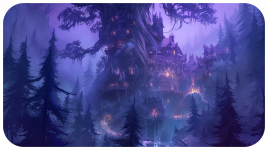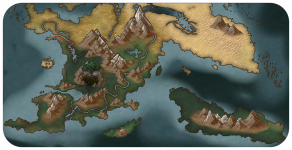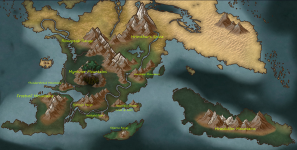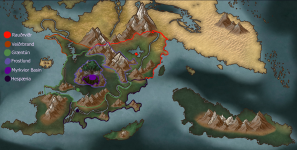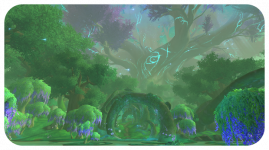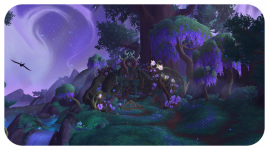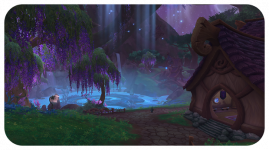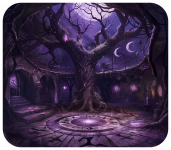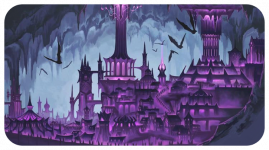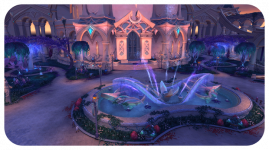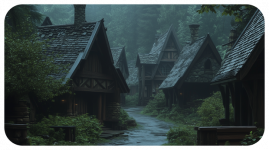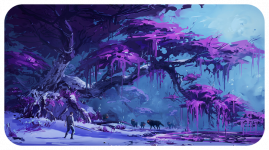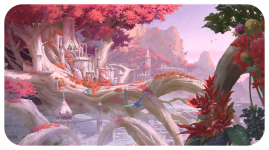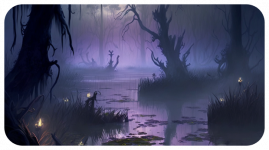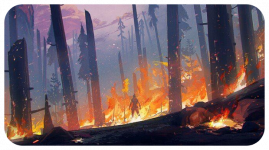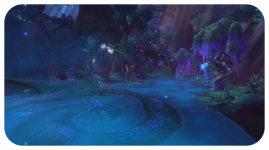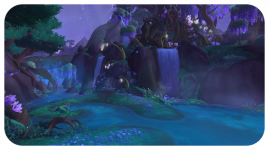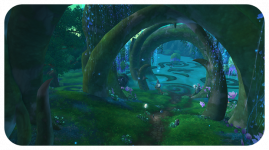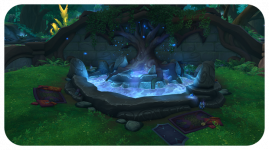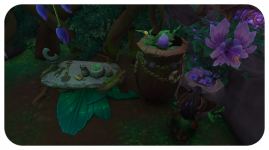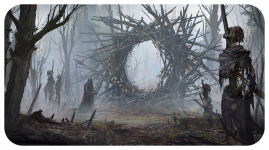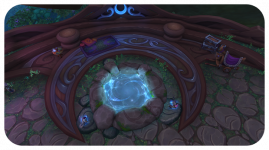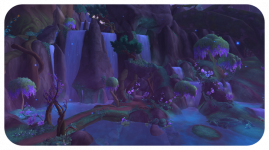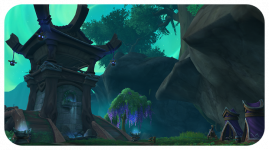Arcana is ubiquitous among Æld'Norai– with their innate gifts and the influence of
Ældrassil's
Grist, the Ælves do not know life without it. Most bias towards magic that is centered around nature, but one could likely find traces of any arcane art if they knew where to look. Though they do have robust safety measures, Ælvenkind readily accepts what unavoidable risks come with their magical endeavors. The pursuit of magic is culturally considered mandatory. While not officially enforced, to abstain, or be unable to, practice magic entirely would result in being socially outcast.
The Ælheimar also boast having two unique variants of magic courtesy of their bond with Ældrassil as well as special rules for Artificing.
The first is
Æcturnis, a nocturnal form of Draoidh. For details, see
Draoidh.
The second is
Vitæ, a flora-based variant of Nekros. For details, see
Vitæ.
Grovewrights are green wrought Artificers. For details, see
Grovewright
All Æld'Norai children are taught one or more Theorems in their formative years as part of their standardized schooling, though they are at bare minimum given at least an overview of all three. As such, all three are incredibly common.
For the Fælnir, Theorems are also commonly taught, though at a far more rudimentary level for the average person. More advanced techniques are reserved for Shamans or those who've pledged themselves to and earned prestige within a Warband. It is understood that this knowledge must be earned, lest the unworthy misuse it.
Practices see quite a bit of use, though the Æld'Norai tend to prefer personal Arcana over them as a cultural trend. Nevertheless, if one does have a personal interest in the pursuit of a Practice, that pursuit thereof is encouraged; there are plenty of apprenticeship programmes available. Out of the three primary Practices,
Alchemy tends to be the most common. Generally, Practices are seen as hobbies.
Contrastingly, Arcanics is a coveted, highly respected pursuit only offered to those who've proven themselves proficient in Ensorcelling.
The Fælnir may only learn
Malediction and
Alchemy, with these two being their primary sciences and methods by which they develop medical care. When paired with traditional herbalist methods, the Fælnir have concocted quite potent mixtures over the years.
All Æld'Norai are born with the verdure gland of
Draoidh, with it being heavily frowned upon socially should any decide not to incite it; this choice is generally perceived as an insult to Ældrassil. For this reason, the nation itself has been shaped by hands who all wield it, with every square inch of civilization having been touched by
Draoidh in one way or another.
Other Glamours are not uncommon, as implants are not that difficult to source for the Ælves at this point in time.
Shimmer and
Grist are popular choices, though
Seeming's proliferation is more heavily scrutinized; even in a society that adores magic, it is often still difficult to trust a
Changeling.
Fælnir are almost never given Glamours unless they are under the thumb of an Ælven master who desires for them to have it, and even then, their master has to request the procedure through official channels in order for it to be approved.
Among the Æld'Norai populace, Galdr are fairly common, though many of them eschew it for Glamour and Poetics for fear of death. In terms of popularity,
Exodus, Terra, Aqua, Abation and
Zephyr are favored in that order, with
Fulgur being uncommon.
Fulgur is not frowned upon, it is merely that the majority of Æld'Norai reside in forests that are not quite fire-friendly demesnes. Fulguri tend to reside in the mountains and caves, with a few strange souls skittering about the blasted Veiðrbrand
If a Fælnir is allowed to have personal Arcana, it tends to be a Galdr, as it is rare for them to be permitted to receive Glamour implants or taught how to utilize Poetics. Many see Galsterei witchmarks as badges of honor and resilience, with the strongest being culturally favored among their peers. The popularity of any given Galdr is very mixed for Fælnir, with
Fulgur having higher numbers than their Ælven counterparts for warmth in harsh winters.
Pacts are whimsical things; outside of
Vitæ, the Æld'Norai are at the mercy of the Godheads when it comes to seeking out such esoteric Arcana. As such, being blessed with a Pact is something that is celebrated among friends and family, oftentimes even extending beyond one's immediate social circles as the Ælves do so love an excuse for a good party.
Practicing Nekros is strictly forbidden; all Æld'Norai are raised to never use it. If the Pact manifests by accident, then such individuals are usually funneled into Vitæ and the purview of the Okulærium.
Fælniri Pacts are celebrated similarly among their kin, though those who manifest such Arcana are then kept under heavier scrutiny by the Æld'Norai than their peers. They are usually pushed into the role of a Shaman, a position seen as honorable, though this is ultimately in order to ensure that their magic use is also under the scrutiny of their peers.
With
Draoidh providing a path for
Syphon and
Apparation, those two are quite commonplace. In fact, most Ælves would find it odd if their peers beyond a certain age have yet to even dabble in them given how convenient they tend to be.
On the other hand,
Possession and
Remnant are much rarer. The former is regarded with the same wariness with which
Seeming is viewed while the latter is seen as a wonderful thing for one to achieve due to its niche nature.
Fælniri Galsterei or those with specific Pacts that hold high esteem in Warbands or as Shamans are generally permitted to take on
Syphon and
Apparation. For them, however,
Possession and
Remnant will almost always be met with swift Sundering.
In their pursuit of Arcane prowess, Blights took root in Ælheim right after Nihilos' Fall from within. Out of all Antarokian societies, Ælheim has the highest presence of Alítheians, many of whom exist in plain sight.
The most prolific example of a Blight being woven into Ælheimar society is that of
Scourge; known colloquially as Ferriers, the story told to the uninitiated goes that their condition was sourced from a bizarre twist performed by one of the Æld'Norai ancients on Avernus' Pact of
Nekros, not dissimilar to how
Vitæ was wrought. In this case, rather than command the undead, Ferriers are capable of shepherding them off to where they belong. In Ælheim, they are understood to be perpetually ill, and that the cause of this is the connection to Avernus they have, with Miasmata being the source of the corruption afflicting their vitality. Most work as morticians or wandering exorcists, some dabbling in a bit of both, but the position is held in very high esteem.
For more information about Blighted play, contact Vicissitude.
Variants and Gramarye are encouraged to pursue and discover among the Æld'Norai, espescially if such things can be plucked from other cultures and brought home.
The most common Variants are Sloadh and Coreadh, with the former being used quite often in Myrkvior's caverns and the latter having been taught to them shortly after peace was brokered with the Cor'Norai.
